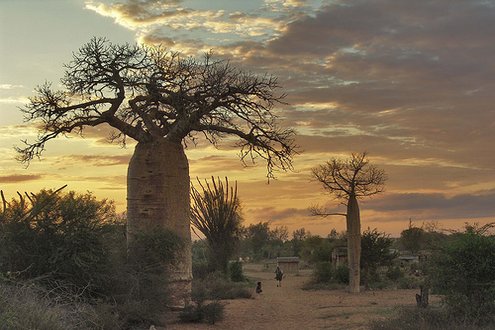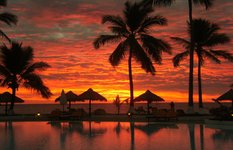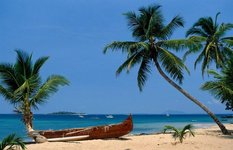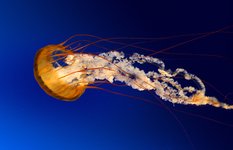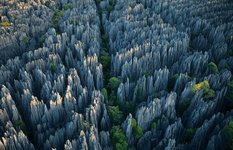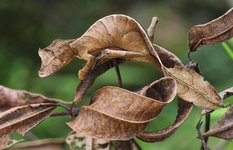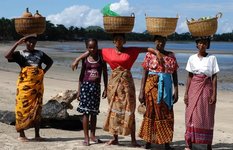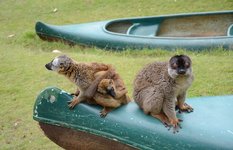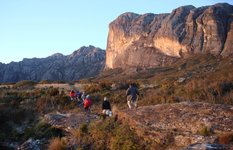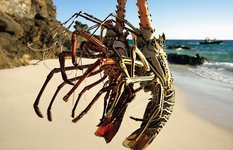 Been there
Been there
 Want to go
Want to go
 Ask friends for recommendations
Ask friends for recommendations
Things to do
- Wildlife: 5% of all known animal and plant species can be found there, and there alone.
- Beaches, diving, fishing: 5,000 km of coastline, 450 km of barrier reef and 250 islands. Rays, reef fish, whale sharks, reef sharks
- Rainforest, savanna, desert
- Mountains, waterfalls, rivers
- Famadihana: traditional exhumation and reburial ceremony
- Beaches, diving, fishing: 5,000 km of coastline, 450 km of barrier reef and 250 islands. Rays, reef fish, whale sharks, reef sharks
- Rainforest, savanna, desert
- Mountains, waterfalls, rivers
- Famadihana: traditional exhumation and reburial ceremony
Attractions and sights
 View Map
View Map
-
The Avenue or Alley of the Baobabs is a prominent group of baobab trees lining the dirt road between Morondava and Belon'i Tsiribihina in the Menabe region in western Madagascar.

-
The fascinating raised limestone plateau is decorated with a frail, chaotic razor-sharp collection of pinnacles, the “Tsingy”, also called the Labyrinth of Stone. Tsingy de Bemaraha is a UNESCO World Heritage Site and is Madagascar's largest reserve (150,000 hectares). Tours of the park are often combined with float trips down the Tsiribihina River.

-
With 5000km of coastline, 450km of barrier reef and 250 islands divers will revel in the choice of sites, from underwater ‘cathedrals’ to shipwrecks, and will relish the chance to see rays, whale sharks, reef sharks and many other kinds of sharks. Snorkellers will be awed by the sheer grace of turtles and marvel at the rainbow of colours displayed by corals and fish

-
You can get away from the overfished waters of Nosy Be and head out to the Radamas or Mitsio islands. Sailfish, Kingfish, King Mackerel and Wahoo are all can be found here.

-
While Madagascar is a land of extraordinary cultural richness. It's a place where in many areas taboo and tradition take precedence over the law; and western-style religion is freely mixed with beliefs in sorcery and unparalleled funerary customs. Attending a famadihana (traditional exhumation and reburial) or a traditional circumcision ceremony can be the highlight of a trip.

-
Just off of Madagascar’s northeast coast, this volcanic island is the country’s largest and busiest tourist area. Wildlife thrives at the well-protected Lokobe Reserve, and the island is home to one of the world’s smallest frogs and most colorful chameleons. Most visitors come for the beach, but despite thousands of tourists, the atmosphere is quite and calm.

-
Isalo National Park is known for its wide variety of terrain, including sandstone formations, deep canyons, palm-lined oases, and grassland. It’s a marvel of evolutionary processes, with an unearthly, sometimes eerie landscape that’s home to endemic plants and ringtail, brown and sifaka lemurs, as well as sacred Bara burial sites. Its interior boasts valleys, waterfalls and canyons. It’s one of Madagascar’s most popular national parks.

-
Trekking through Parc National de Ranomafana’s misty and magical cloud forest is a soul-soothing experience. The landscape consists of odd-shaped rolling hills, thick with dark-green vegetation, and numerous small streams that turn into waterfalls. It’s one of Madagascar’s most popular parks, with fabulous forest walks, lemur-spotting and excellent tourist facilities.

More attractions
 Hide Map
Hide Map
When to go
| |||||||||||||||||||||||||||||||||||||||||||||||||||||||||||
Warning:
Vaccination required
How to get there
Reviews


